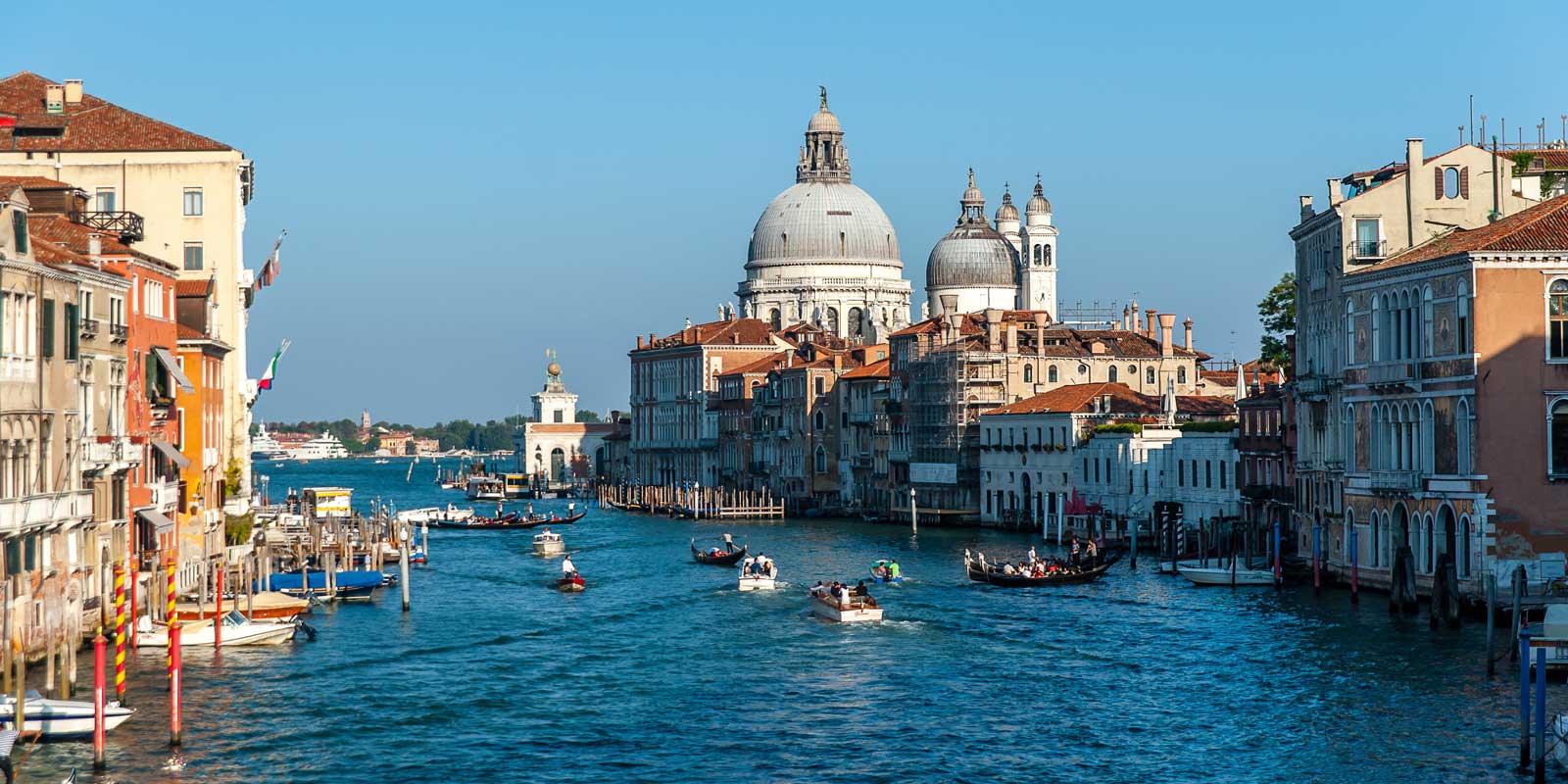面具和服装
威尼斯是一座充满奇观、神秘和艺术的都市,历史与想象在此交汇。最能体现这一点的是每年狂欢节上精心制作的狂欢节面具和服装。威尼斯面具以其镀金表面、羽毛装饰和戏剧化的表演,数百年来一直吸引着全世界的目光。
本指南介绍了威尼斯面具的背景、位置,并借助定制的威尼斯购物地图带领游客参观世界著名的威尼斯工作室。
购买威尼斯之旅和门票
威尼斯面具的历史和意义
威尼斯面具的迷人历史可以追溯到12世纪,当时威尼斯人开始采用在仪式和民间庆典上遮盖真实自我的独特习俗。这些早期的面具既用于社交场合,也用于庆祝活动,佩戴者可以借此摆脱日常社交角色,隐姓埋名。
随着威尼斯共和国逐渐发展成为一个富裕的海上共和国,这一传统也在社会各阶层中发展并传播开来。到了16世纪,面具已成为威尼斯人生活的一部分,人们戴着面具去剧院、政治集会、游戏俱乐部和约会,更不用说在狂欢节期间了,而且一年到头几乎无时无刻不在戴面具。
到了18世纪,面具不再是时尚单品,而是成为威尼斯自由和保密的特殊管理的象征。社会各阶层的公民都可以毫无顾忌地行事,不必担心受到指责、批评或报复。
然而,这种自由只持续了很短的时间。由于担心犯罪、欺骗和腐败,威尼斯共和国规定在狂欢节以外的时间戴面具是非法的。尽管如此,这种习俗仍然根深蒂固地存在于这座城市的社交生活中。
各种面具都带有固有的象征意义。白色全脸面具(Bauta)通常由黑色斗篷和三角帽遮盖,是匿名公民的伪装——允许在公共场合或政治生活中自由发表言论。Moretta是传统时期贵族妇女佩戴的椭圆形小面具,象征着女性的沉默和谦逊,用牙齿咬住的纽扣固定。
其中最具象征意义的面具之一是Volto(“脸”),通常用金箔、蕾丝或巴洛克装饰物装饰。可怕的Plague Doctor(瘟疫医生)面具以前用于医疗,长喙中装满了有气味的草药,最终成为狂欢节木偶戏中的讽刺人物。
为什么要购买威尼斯面具或服装
购买威尼斯面具或狂欢节假面,就是购买一段古老的艺术传统。这些人工制品赋予其拥有者威尼斯传统的一部分精神,这些精神是工匠们经过数百年代代相传,精心保留下来的古老技艺。
每张面具都是一件令人惊叹的手工艺品,采用传统方法制作,包括纸浆模塑、徒手绘制、贴金箔、剪纸以及羽毛、水晶和锦缎等精致装饰。
这些面具装饰华丽,在当今的活动中兼具象征意义和实用功能。它们在威尼斯狂欢节、剧院、时装秀、化妆舞会和明星庆典活动中大放异彩。还有一些面具被收藏家作为优雅的历史装饰品,陈列在暗箱或装饰墙中。
真正威尼斯面具与大量生产的廉价仿制品之间有着明显的区别,这一点值得了解。真正的面具通常由艺术家签名,并通过知名工作室出售。
而大众市场中的仿制品通常由塑料制成,几乎没有传统工艺,通常由纪念品商店出售,没有任何文化或艺术价值。真正的面具不仅是对威尼斯工匠的回报,而且可以确保购买到更真实、更持久的物品。
威尼斯面具和服装购物区概览
服装和面具制作艺术在威尼斯的各个街区蓬勃发展。
每个街区都有其独特的外观和购物体验。
圣保罗和圣十字区:这些老街区拥有古老的面具制作工艺和蓬勃的生命力。这些街区靠近大运河,拥有一些最古老、最传统的面具制作工坊,通常位于拥有数百年历史的建筑内,空气中弥漫着胶水、颜料和纸浆的浓烈气味。
圣马可:从圣马可广场步行即可到达,这个街区将美丽与休闲完美融合。游客可以轻松地逛遍出售精美面具的精品店,但有必要区分手工作坊和假日旅游商店。在豪华的陈列背后隐藏着许多历史悠久的工坊。
卡纳雷吉欧:卡纳雷吉欧拥有住宅区的自然特色,街道更加安静,游客可以在这里与当地面具制作师进行真正的交流。这里的许多独立工作室在轻松、私密的环境中创作独一无二的设计。
多尔索杜罗区:充满活力和年轻气息,艺术家、画廊和学院桥使多尔索杜罗区成为对经典形式进行创造性重新诠释的沃土。游客可能会发现用非常规材料或抽象形式对传统面具的前卫重新诠释。
城堡区:这是威尼斯最古老、最僻静的地区之一,专业艺术家们在这里世代传承狂欢节服装艺术。这里的作坊数量较少,但都极具传统特色。
朱代卡岛:朱代卡岛名气较小,但拥有威尼斯最精致的服装工作室。这些精品店专门为威尼斯狂欢节参与者提供高端租赁、量身定制和全套服装设计服务,从配饰到服装,一应俱全。
威尼斯面具和服装的种类
威尼斯面具和服装提供了丰富多彩的选择,每种都有特定的文化和审美目的。
全脸面具:除了包塔、沃尔托和瘟疫医生图案之外,这些全脸面具还唤起了人们对威尼斯社会老式匿名和戏剧化的印象。非常适合巧妙地融入服装,通常用于历史重演和主题狂欢节庆祝活动。
半面具:Colombina(无忧无虑且装饰华丽)和Arlecchino(顽皮且充满活力)等面具只有半张脸,在保持神秘感和性感的同时,还能提高活动性和可视性。它们经常用于派对和半正式活动。
眼罩和羽毛面具:这些引人注目的面具通常以诱惑和魅力为设计初衷。它们以蕾丝、金属丝、施华洛世奇水晶和夸张的羽毛为特色,在化妆舞会、婚礼和高端派对上总是大受欢迎。
Commedia dell'Arte面具:这些面具源自意大利戏剧传统,拥有Pantalone、Zanni、Brighella和Pulcinella等经典角色。它们以夸张的面部特征和夸张的线条,展现了文艺复兴时期戏剧的喜剧精神。
现代和奇幻设计:当代手工艺设计师们利用施华洛世奇装饰、金属和混合媒介,对威尼斯面具进行华丽、艺术化的诠释。这些面具通常都是定制的,深受设计师和化妆舞会爱好者的青睐。
历史服装:威尼斯的狂欢节服装奢华且具有历史底蕴,包括刺绣礼服、天鹅绒披肩、丝带、蕾丝手套和三角帽。一些工作室提供量身定制的洛可可风格全套服装,还有一些工作室提供高品质的租赁服务,供个人表演使用。
顶级威尼斯面具和服装店
威尼斯拥有一系列著名的面具和服装店,每家都有自己的历史和艺术理念:
Ca' Macana:这是威尼斯最古老的工作室之一,位于多尔索杜罗区,闻名于世,曾为好莱坞电影和顶级歌剧制作提供面具。工作室提供手工课程、梦幻和经典面具以及专家建议。
Tragicomica Venezia:这家工作室位于圣保罗,擅长制作意大利即兴喜剧面具、文艺复兴时期复制品和戏剧服装。每件作品都经过研究,并按照原作制作。
Original Venice Shop:这家经验丰富的商店提供认证的手工面具,有实体店和网店。从简单朴素到精致华丽,设计均带有艺术家签名,并接受定制。
Magic of Venezia:这家家族企业位于卡纳雷吉欧区附近,以周到的服务、定制面具和服装租赁而闻名。客户可以预约全套狂欢节服装。
Atelier Marega:这家高档时装店出售高级定制服装、定制服装和配饰。游客甚至可以租一件舞会礼服,穿上它参加威尼斯舞会,并拍摄专业肖像照。
La Bauta Venezia: 在里亚托桥附近,街边有一家专注于复古造型、严格遵循传统材料和工艺的商店。他们专注于制作Bauta,对细节一丝不苟。
威尼斯纸糊:一个创意工作室,将古代技艺与非具象艺术相结合。在这里,面具不是通过建模来雕刻的,而是通过绘画笔触和纹理叠加来完成的。
所有地点都标注在威尼斯地图上,因此购物变得简单而个性化。
购买威尼斯城市通票
参观:狂欢节面具和服装 威尼斯
游客信息
营业时间:威尼斯的服装和面具商店通常在上午10点至晚上7点半之间营业,但有些工作室在下午1点至3点之间休息。圣马可、圣保罗和多尔索杜罗附近的旅游商店通常每周七天都营业。然而,在城堡区或朱代卡岛等居民区的小型工作室则营业时间较晚或关门较早,特别是在淡季。
在2月的威尼斯狂欢节期间,营业时间会延长,上午去参观非常值得,这样可以避开拥挤的游客,确保获得试穿或定制等个性化服务。
参观威尼斯面具和服装工作室的最佳时机是狂欢节前几周(1月底至2月初)或春季(4月至6月),此时行人流量适中,工匠们有足够的时间与游客进行深入交谈。
上午晚些时候(上午10:30至下午12:30)或傍晚(下午5:00之后)参观,氛围最宁静,光线最适宜,可以优雅地欣赏面具和古装。
如果这是一次文化体验,建议您考虑安排一次参观,同时考虑狂欢节活动和提前预定古装试穿。
着装要求和入场政策:参观面具店或服装工作室无需遵守正式的着装要求。但是,顾客在参观高档工作室或试穿服装时,请穿着得体休闲的服装。
某些工作室可能会禁止拍照,尤其是那些制作特殊设计或销售定制产品的工作室。参观者应提前征得同意,才能对展出的面具或室内主题进行拍照。参观者需要尊重工作室低调的艺术氛围,保持低调的语调和礼貌。
门票信息
入场费:威尼斯面具店和服装店大多免费开放。但专业工作室,如面具课程或服装试穿指导,大多需要预约,费用在25欧元至150欧元之间,取决于课程的复杂程度和时长。
Ca' Macana或Atelier Marega等著名工作室提供互动体验,游客可以在大师的指导下绘制或装饰自己的面具。
组合票:虽然博物馆门票本身不包括面具或服装,但一些文化体验套餐或狂欢节之旅会提供捆绑活动。这些活动包括参观多个面具工作室、参观设计工作室或参加化妆舞会。
通过当地活动组织者、礼宾部或威尼斯狂欢节官方网站预订,即可获得此类超值套餐,通常还能享受优惠或优先预订。
强烈建议提前预订,尤其是在狂欢节期间或需要定制面具和服装时。大多数正宗商店(如Original Venice Shop、Tragicomica Venezia和Magic of Venezia)通常提供网络目录、预约和送货服务。
通过二维码、移动指南和印刷手册访问的威尼斯购物地图包含经过筛选的正宗面具店、服装设计师、租赁店和配饰供应商的名单。该地图还可以下载供离线使用,其中包含每个场所的路线和实时营业时间。
门票推荐
使用威尼斯面具和服装购物地图
为了探索威尼斯隐秘的小巷并找到最好的工作室,建议顾客使用威尼斯购物地图。从新手到资深收藏家,顾客都会喜欢地图提供的以下信息:
类别:可见图标将顾客引导至古董面具、奇幻服装、配饰和租赁店。
筛选:可根据区域、价格范围、面具类型、工匠或商业以及可用库存进行筛选。
步行路线
永恒的面具与仪式:从圣马可广场开始,蜿蜒穿过圣保罗,重点介绍古老的工作室。
工匠工作室漫步:从卡纳雷吉欧到城堡的愉快漫步,在僻静的工作室停留。
戏剧服装设计与租赁:从朱代卡岛开始,重点介绍独立服装设计工作室。
QR码和离线使用:地图可下载为PDF格式,也可通过导游手册的QR码和旅游信息点获取。
有了这款产品,购买面具不仅成功,而且完全身临其境。
购买正宗威尼斯面具的专业提示
在威尼斯购买面具或服装时,行家必须了解以下几点:
真实性证书:确定面具是否带有真实性证书。了解工作室的历史和制造工艺。
材料:确保面具采用纸浆、陶瓷或皮革。避免塑料复制品。
工艺:研究绘画、镀金和附件等方法。手工制作的瑕疵和缺陷营造出真实感。
定价:简易手工面具的售价至少为30-50欧元,复杂面具的售价至少为100-500欧元。工艺和质量直接影响价格。
定制:任何商店都可以修改颜色、添加装饰,甚至完全定制布局。
保存:将面具存放在阴凉干燥的地方。安装或放置展示架,确保结构和表面保持完好无损。
威尼斯面具的今天
威尼斯面具的应用如今已远远超出了狂欢节的范畴。
人们会在二月的威尼斯狂欢节上佩戴面具参加化妆舞会、派对和游行。
面具还被用于室内设计、画廊展览和文化装置。
此外,它还出现在时尚杂志、戏剧和外国电影中。
从巴黎沙龙到纽约庆典,世界各地的化妆舞会上都能看到面具的身影。
威尼斯面具经久不衰的造型、美感与戏剧性,使其总能代表神秘与美丽。
不容错过的威尼斯之旅和门票
结语
威尼斯不仅仅是画布上的艺术或大教堂。威尼斯以服装和面具的形式出现在街道上,散发着历史、阴谋和威严的气息。每只手工面具不仅是一件艺术品,更是一个城市的灵魂——肮脏、华丽且富有创造力。
作为纪念品、时尚配饰或舞台道具,威尼斯面具以精致的方式将过去与现在融为一体。威尼斯地图邀请游客按照自己的方式,有尊严地寻找这些宝藏。狂欢节的美丽、戏剧性和幻想性隐藏在每张面具背后——等待被发现、佩戴和珍惜。
